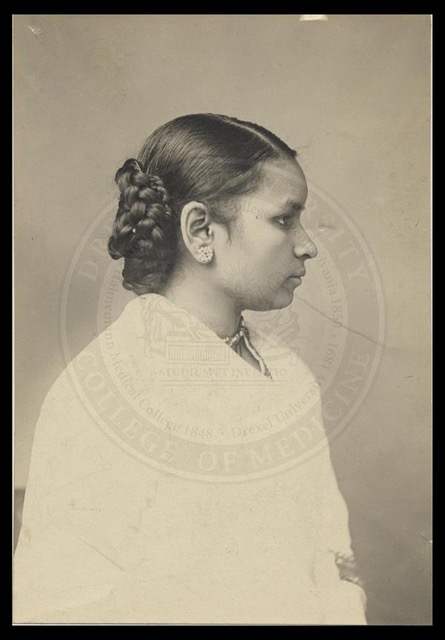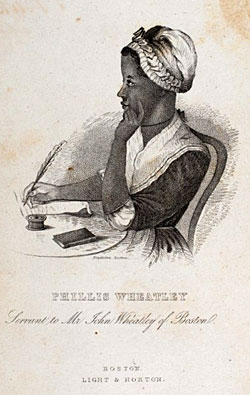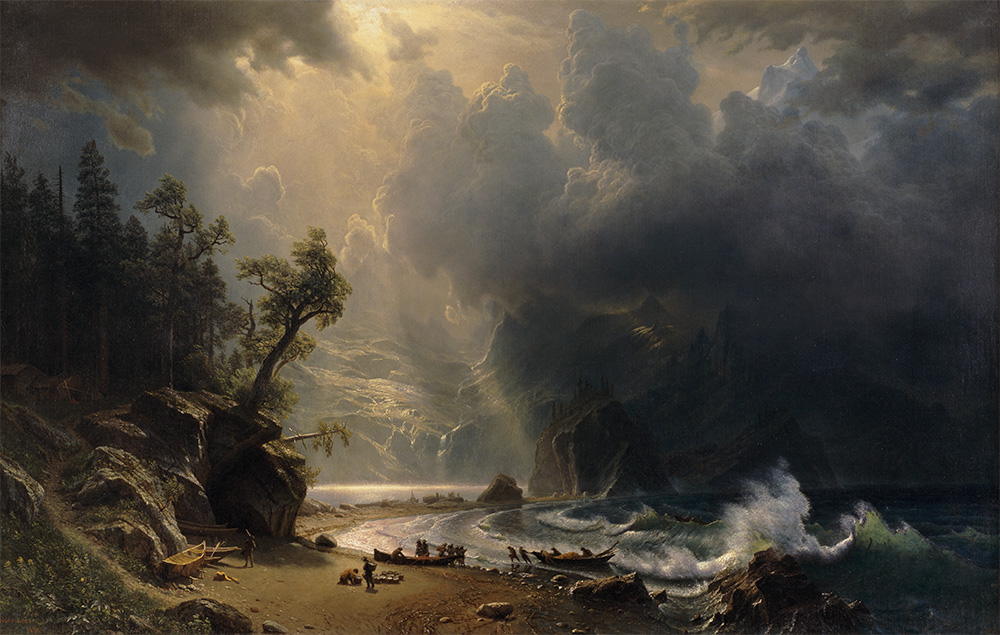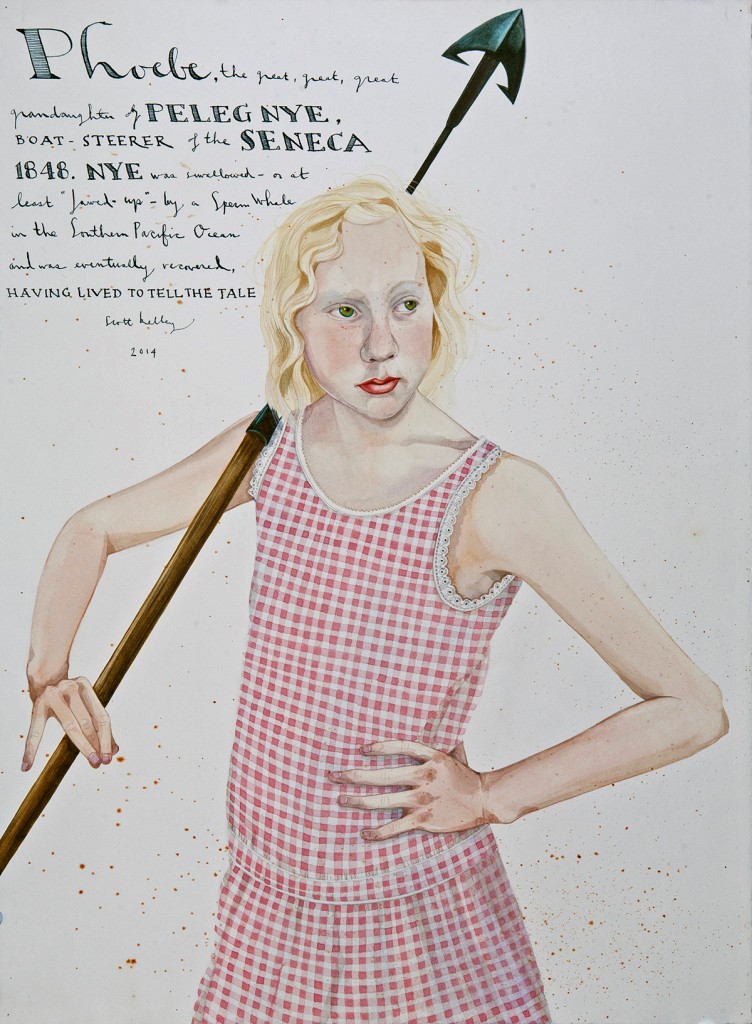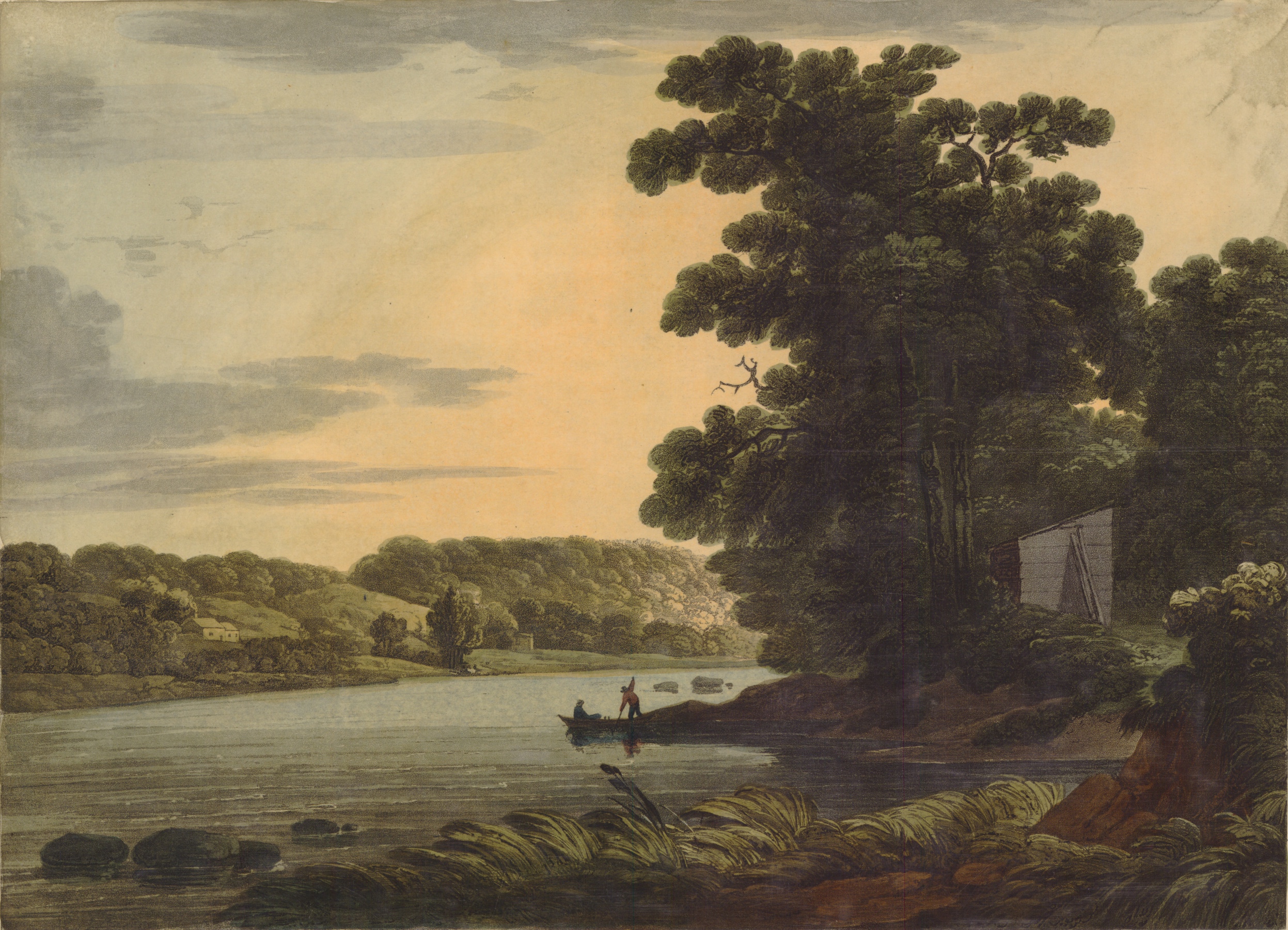AFRICA from the beſt AUTHORITIES
Where Africa’s coast slips into oceans
And seas, its outline is lightly shadowed.
From there words bristle, rough stubble, no,
More like a halo radiating names—Thomas,
Lucia, Christopher, Stephens—saints
And people some thought important
Enough to warrant namesakes along
That shore. Researching the American
Colonization of Liberia
In the American Antiquarian
Society’s reading room, looking
For western views of the continent
For context, I’ve been looking at old maps
Of Africa all day. This map keeps drawing
Me back with its claim of “AFRICA
From the beſt AUTHORITIES” and all
Those names—less divine light and more
Like a ruff, the fashionable starched collar
Of Queen Elizabeth’s time, circumscribing
Africa. The hinterland, the interior, wasn’t
Safe from the cartographer’s hand—hardly
A blank spot on the continent—borders drawn,
Rivers traced and lakes laid down. Clumps of neat
Lollipop trees with shade under them represent
Forests while snaking rows of comma strokes
Denote mountains. The names of peoples and kingdoms
Crisscross the land (I’m loath to say like welts left
Across a slave’s back by an overseer’s whip because
It’s too easy, though I see the damage done
By each hand) and words almost get lost—
MOROCCO, EGYPT, NUBIA, ABYSSINIA,
ZAHARA or the DESART, Tombuctoo,
N E G R O L A N D, DAHOMY, B E N I N,
Biafara, LOWER ETHIOPIA, A Savage People,
CAFFRARIA, Men Eaters, Gold Mines, Hottentots,
And places and peoples I don’t know. Commodities
Line the coast past Sierra Leone: Grain Coaft, Ivory Coaft,
And on this map the cartographer wrote Gold Coast as Goad Coaft,
Next to its neighbor, Slave Coaft. All of this ringed by
Those names in English and Arabic and various Romance
Languages like a wedding band from an ill-intentioned man.
Schieffelin Bros. Exports & Imports
2010 [1]
My dusky ear hears a similarity between Schieffelin
and shuffling, the sound of steam engines
and many wings rustling when a murmuration
of starlings takes flight all together
like a coffle—that word came to English in the eighteenth century
from the Arabic word for “caravan” and even though it rhymes
with “awful” it seems a euphemistic way to describe stolen
manpower, muscle and motor skills mustered (in a coffle)
to usher in the prosperity of a nation.
In the nineteenth century, before starlings arrived,
the proliferation of steam engines and mechanization
precedes the rising wave of industrialization.
1851 [2]
Henry, the older Schieffelin brother, entered the business first
—moved commodities and goods from one place
to another, across waters and borders—helped
the American Colonization Society export American-born
negroes to Liberia. And for his efforts and money Henry
has a namesake town—Schieffelinville—in Liberia still on the maps.
1890 [3]
As the story goes, younger brother Eugene, a charter member
of the American Acclimatization Society, got the bright idea to import
every bird that left Shakespeare’s quill to fill this land with their songs
and perhaps cultivate another great bard.
And as for Eugene’s legacy, for plaguing this land
with starlings, his name has lately come up
in environmentalist circles—a newer movement
more concerned with impact than importing.
1957 [4]
Besides being prolific, starlings are proficient mimics
of other birds’ songs. The sounds of starlings like a fog of hornets
or a stinging cloud of starlings, say, or swarm of negroes
like those dreaded Africanized bees that threaten
the Americas; you hear about them on the news
when there’s no blood to lead and scant terrorists’ chatter.
1816 [5]
The society saw the Americo-Africans,
good Christians, as a civilizing force
to make the “blighted dark continent” brighter.
1847 [6]
When independence came the Liberians based their constitution
on the founding fathers’ frame—a likeness similar
to daguerreotypes like the ones Augustus Washington,
a black daguerreotypist, made in his Hartford, Connecticut studio.
1859 [7]
Washington mastered this mid-century art
and made a living and name for himself
producing framed likenesses “correct and beautiful.”
Rich and poor sat for this working artist;—
he even photographed John Brown
before immigrating to Liberia in 1853.
Nineteenth Century [8]
The Schieffelin brothers, apropos
of their urges, made their fortunes
in shipping and pharmaceuticals
(exporting negroes and importing
starlings only hobbies) while all
around them the Second Great
Awakening and improvement
movements changed the face of the nation.
1872 [9]
Folks like Allen Yancy and Sandy Gannoway,
recently freed negroes from Milledgeville, Georgia,
and thereabouts decided that one morning they
would awaken in Philadelphia, Liberia
—just four degrees off the equator,
so no twilight before the sun broke
the darkness like a lightning bolt
or liberty in their new home.
2002 [10]
Though not necessarily in daguerreotypes,
in some art fish represent sex and birds freedom.
And who don’t love catfish like Black men love
their cars: Firebirds and Thunderbirds, even Skylarks,
Impulses, and Pulsars—myths, birds, urges, and stars.
1849 [11]
This world we traverse
slowly wobbles under stars
on its axis like a top,
and polaris hangs marking always
celestial north dropping a plumb line
for us to follow making our movements
if not our positions true.
circa 450 BCE [12]
One of Zeno’s paradoxes wrangles with only ever
making it halfway because of halving
all the way and never quite
getting there.
This brings to mind, as paradoxes will,
never being met halfway and not making half an effort
or maybe the effort’s half-assed
or half-hearted and half-headed.
2011 [13]
I wonder how long
you have to claim a home
before you can comfortably feel
xenophobic.
1 While at the American Antiquarian Society I found out that Eugene Schieffelin and Henry M. Schieffelin were brothers.
2 Henry M. Schieffelin became a Vice President of the American Colonization Society.
3 Eugene Schieffelin released less than one hundred European Starlings in Central Park, introducing them to this continent. He did it again the following year, and now starlings, which are considered pests, number in the hundreds of millions.
4 A small number of Tanzanian honey bee queens that were imported to Brazil escaped and bred with European honey bees. The resulting hybrids are known as Africanized honey bees. These more aggressive bees are also known as killer bees.
5 Henry Clay, Richard Bland Lee, John Randolph, Daniel Webster, Bushrod Washington, George Washington’s nephew, and other prominent political figures established the American Colonization Society.
6 Liberia declared its independence. The American Colonization Society, which maintained its connections with the nation and continued to sponsor emigration “expeditions” until 1904, welcomed Liberia’s independence.
7 John Brown, a radical abolitionist, led an unsuccessful raid on an arms depot at Harpers Ferry.
8 Many reform movements started in the nineteenth century; among them were the Temperance Movement, the Abolitionist Movement, the Second Great Awakening, and the Women’s Rights Movement.
9 One hundred and fifty folks from central Georgia emigrated to Liberia under the auspices of the American Colonization Society.
10 During a lecture at Rice University the South African artist, William Kentridge, responded to an audience question by explaining that the fish in his drawings represent sex.
11 Harriet Tubman escaped from slavery in Maryland and would return numerous times to aid some 70 people to escape slavery as a conductor on the Underground Railroad. She used the North Star, Polaris, as a guide to travel under the cover of darkness.
12 Zeno, a student of Parmenides, thought up his paradoxes in order to support Parmenides’s teachings.
13 I’m sitting here striking keys and wondering.
November 16, 1872 [1]
A baby stretches
out of sleep, dawn
unfurls slowly. The sun
rises, a sigh you’re not
surprised by when you
hear it from your lips.
Dawn is different
everywhere. Allen
Yancy, Sandy Gannoway
and their families are in
Savannah this fall morning
boarding a boat
while their kinfolk
and old neighbors
wake to the rooster’s crow
back in Milledgeville.
On the steamer San Salvador,
they’re heading north—what
used to be freedom, heading
to New York, farther north
than they’ve ever gone,
and the Atlantic Ocean,
as far as they can see
on their right, nestles its
breath in their nostrils
till they can’t smell
Georgia anymore.
1 December 1872 issue of the American Colonization Society newsletter, The African Repository, the Society reports of its fall expedition, “The barque ‘Jasper,’ which left New York on Thursday, November 21, bore a noble freight for Liberia. A company of one hundred and fifty persons left this country to better their condition, and to promote Christian civilization in Africa.” These were emigrants from central Georgia.
A Freedman Speaks of His Fellow, or From Milledgeville to New Philadelphia, 1872
Sandy Gannoway gone away from here.
That old negro headed across the water
with his old lady, son, and daughter-
in-law. This his home near seventy-two years;
—now he going off to Liberia, Land
of the Free? But he been free since Sherman
came through trailing a crowd of us contraband,
us negroes now freedmen—free to stay or wander.
Guess this place more than Sandy could bear.
Thinks he’ll realize the promise of freedom over there.
Sandy Gannoway gone away from here
leaving this freedom to us new freedmen
back here to work and fight, to make a stand or falter.
That new freedman’s headed across the water
to go be free in what they call our fatherland.
Statement of Poetic Research
Daylight Breaks Again Suddenly Upon the Darkness: Revelations in the Library
As a child I was curious about objects of the past, those things put aside, the tools no longer used. My great-grandfather’s Polaroid model 95A with bellows that collapsed like an accordion, my great-grandmother’s treadle Singer sewing machine and my great-uncle’s rusty anvil and plough first drew me into wondering how they worked and then into wondering about how they were used and how the people who used them lived—what we now call material culture. This was the kind of history that interested me.
But when it came to poetry, like many young poets, my first poems focused on myself. It was this exploration of my personal identity that ultimately led me to an exploration of the past. I’d brought several poems about my relationship with my father to a creative writing workshop, and a female classmate challenged me to write about the women in my family. That challenge and my response led to a sea change in my poetry. After an informal interview with my grandmother, I used her oral history to craft a sonnet sequence based on her life. Those sonnets whetted my appetite for history and using historical material—the details that had fascinated me as a child—in poetry. I began to focus on not only my family’s stories but also the stories and history of the black community in Milledgeville, Georgia, my hometown. This led me to invent a character, Silas Wright, in order to explore the history of Milledgeville in persona poems—poems in which Silas or one of his contemporaries is the speaker. I intentionally made Silas a generation older than my grandmother so that I would have to dig deeper into the history. In addition to talking to older members of my community, I read local history books and local newspaper articles from the 1800s and early 1900s. I continued to hone my craft, experimenting with poetic forms, voice, and associative imagery. As a result of learning more about Milledgeville and about craft, I wrote my first book, Blood Ties & Brown Liquor.
While reading James Bonner’s Milledgeville: Georgia’s Antebellum Capitalfor Blood Ties & Brown Liquor, I came across mention of two black men who snagged my imagination. They were Sandy Gannoway, an elderly man from Milledgeville, and Allen Yancy, a young man from the neighboring town of Sparta, Georgia. In late 1872 each of them, along with their families, became part of the 150 people from central Georgia immigrating to Liberia. I wondered about their motivations to emigrate after Emancipation and during Reconstruction. And I wondered about Sandy Gannoway’s decision to return to Milledgeville so quickly, in early 1874. But that wasn’t a part of Silas Wright’s story or my vision for Blood Ties & Brown Liquor.
It was also around this time that I was introduced to the poetry of C.P. Cavafy. His poem “Kaisarion” affirmed my belief in the possibilities of exploring history with poetry. In “Kaisarion” the speaker, whom I closely identified with, gives the reader his motivation for reading a history text late one night. “Partly to throw light on a certain period, / partly to kill an hour or two,” is the insouciantly ambivalent reason given for opening the book. But it is the speaker’s serendipitous finding of “a brief / insignificant mention of King Kaisarion” which commands his attention, as Cavafy writes in the third stanza:
And there you were with your indefinable charm.
Because we know
so little about you from history,
I could fashion you more freely in my mind.
I made you good-looking and sensitive.
My art gives your face
a dreamy, an appealing beauty.
And so completely did I imagine you
that late last night,
as my lamp went out—I let it go out on purpose—
it seemed you came into my room,
it seemed you stood there in front of me, looking just as you would have
in conquered Alexandria,
pale and weary, ideal in your grief,
still hoping they might take pity on you,
those scum who whispered: “Too many Caesars.”
The scant historical information he has about Kaisarion grants the speaker liberty to flesh out the skeletal image he gets from history. The speaker experiences an epiphanic moment when the lamp goes out and Kaisarion appears. In the dim history and the darkness of his room the poet’s imagination can throw light on and evoke this historical figure. The poet’s revelation about who Kaisarion is brings this ancient royal personage of minor status to life again. I consider this poem a found ars poetica that applies to my own poetic projects. It articulates my process, at least in part. When I’m writing and revivifying history with my poetry, I feel like a conduit between the past and the present.
I carried Sandy Gannoway and Allen Yancy around with me for a number of years with the intention of someday researching Liberia, the American Colonization Society, and these men’s experiences. After Blood Ties & Brown Liquor found a home at the University of Georgia Press, I took stock of the poems that I’d written outside of the project and found the beginnings of my second manuscript, Dangerous Goods. Between starting Blood Ties & Brown Liquor and getting it published I’d moved from the Deep South to the Upper Midwest. The poems that I’d written exploring my new home, Bemidji, Minnesota, formed the germ of this new book. I began to wonder more about Allen Yancy and Sandy Gannoway; I thought that their leaving the South for a new country might be similar, in a way, to my move to Minnesota, which felt like a different country to me. Their story and the story of Liberia fit in well with the themes of my new manuscript.
Bonner’s brief mention of Allen Yancy and Sandy Gannoway in the context of what was happening in Milledgeville after the Civil War led me to articles in the Milledgeville newspaper, The Union Recorder. But I didn’t know very much about Liberia, the American Colonization Society, or immigration, particularly during the Reconstruction era. These were the things I was interested in researching when I went to the American Antiquarian Society in March 2010. I learned from my experience doing research for Blood Ties & Brown Liquor that period newspapers give one a window into the everyday world of an era—from the things found to be newsworthy to what was on sale at the local dry goods store. Primary documents are also invaluable sources of language and textural details for poems.
Part of what I do is attempt to imagine the physical reality of places in the past; those details help me understand and imagine people’s experience. For example, since I’ve moved to northern Minnesota, I’ve noticed the atmospheric differences ten or fifteen degrees in latitude make not just in temperature but in the quality and amount of sunlight. But I hadn’t thought about the simple and obvious fact of light in Liberia until one day in my AAS reading, I came across this passage about the equatorial sunlight and twilight in Liberia: The Americo-African Republic by Thomas McCants Stewart:
The Americo-African Republic lies wholly within the tropics, and is very near the equator. Its southern extremity is only four degrees north of that great belt, and its northern limit seven degrees. The days and nights are practically equal. There is no twilight. Darkness follows fast behind the setting sun; and the daylight breaks again suddenly upon the darkness.
Stewart, an African American lawyer from South Carolina, immigrated to Liberia in 1883 where he taught at Liberia College for a couple of years before returning to the United States. His observations will help me imagine my way into Gannoway’s and Yancy’s reality.
I also spent time simply looking at all of the maps of Africa in the AAS holdings in an attempt to better understand the world in which Gannoway and Yancy lived. When I was working on Blood Ties & Brown Liquor, I found a large map of Milledgeville from 1908 at the Milledgeville courthouse, a copy of which I hung on my wall. I looked at it every day, several times a day. It was invaluable not only in showing me how the reality of Milledgeville had changed and grown since 1908, but it also revealed what the cartographer of the time perceived as relevant to this representation of Milledgeville. It made me rethink Milledgeville and the past a little more. With this experience in mind, I looked at those maps of Africa to see what cartographers and explorers and would-be explorers saw and represented and expected to see. The poem “AFRICA from the beftAUTHORITIES” is based on my encounter with one of those maps.
While “AFRICA from the beft AUTHORITIES” came out of poring over maps, another poem was sparked by one of those serendipitous finds that sometimes occur with research. I stumbled onto the mention in an acknowledgments page of a Henry M. Schieffelin, a benefactor of Liberia and member of the American Colonization Society. I immediately wondered if he was connected to another minor historic figure I had written about in another poem—Eugene Schieffelin. This other Schieffelin, a charter member of the American Acclimatization Society, was responsible for introducing the European Starling to this continent. That bird is now considered by many to be a pest—a non-native invasive species. The AAS staff was able to track down the Schieffelin family tree and confirm that Henry was Eugene’s older brother. I was fascinated by their involvements with, in the case of Eugene, bringing starlings to the United States, and in the case of Henry, colonizing Africa with American-born folks of African descent. Their motivations, the ways they supposed they were improving the United States with their actions, inspired the meditative poem “Schieffelin Bros. Exports & Imports.”
I spent some time digging into issues of the American Colonization Society’s publication The African Repository and found the narrative of Sandy Gannoway and Allen Yancy’s trip to Liberia. Reading that account, I felt I’d found my people—my ancestors, in a way. Though as far as I know I’m not related to any of the folks that left Georgia on that “expedition,” I did feel an affinity for them. I have a sense of what leaving could mean—the feelings and emotions tangled up with putting distance between yourself and what you’ve known as home.
I went to the AAS interested in immigration to Liberia during the Reconstruction era—curious about the choice between the recent freedom of most Black Americans here or the different freedom there. I was also looking for a broader historical context, startling images, texture, details, and language—delicious, chewy language—all of which I found. But my findings kindled a desire for more. This is an ongoing project; I’ve taken what I have found and crafted some poems, but I’m still learning how to use this particular historical material. And there is so much more. While I was at the AAS, Professor Ezra Greenspan, Ph.D., a fellow, introduced me to a successful African American daguerreotypist named Augustus Washington, who immigrated to Liberia in 1853. Given my fondness for photography and framing the world, Washington is definitely a figure of interest. Poetry is an empathic art. And the leaps of empathy and understanding necessary to render the psychologically plausible in a poem require me to know more and more clearly the motivations of the figures and characters I write about. I need to do my best to comprehend their circumstances and the decisions they made in those circumstances. My current manuscript, Dangerous Goods, includes the poems published here in Common-place. But I’ll continue to write poems about Liberia, and those future poems will find a place in my next project.
Further reading:
For a brief discussion of the “emigration pattern of blacks” from Milledgeville following the Civil War and mentions of Sandy Gannoway and Allen Yancy, see James Bonner, Milledgeville: Georgia’s Antebellum Capital(Athens, Ga., 1978). See also The Union Recorder, June 11, 1873 for “Letter from Liberia by Allen Yancy” and February 18, 1874, for “Sandy Gannoway, a freedman, of this county … ” an announcement of Sandy Gannoway’s return from Liberia.
The translation of C.P. Cavafy’s poem, “Kaisarion” used above can be found in its entirety in C.P. Cavafy: Collected Poems, trans. by Edmund Keeley and Philip Sherrard, ed. George Savidis (Princeton, 1992).
The December 1872 issue of the American Colonization Society publication,The African Repository, features the narrative of the Society’s fall expedition—the one that conveyed Sandy Gannoway, Allen Yancy, and their fellow central Georgians to Liberia.
Liberia: The Americo-African Republic by Thomas McCants Stewart provides a fascinating firsthand account of Liberia in the 1880s.
Find a discussion of Augustus Washington and his works as well as examples at the National Portrait Gallery Website devoted to him: “A Durable Memento: Portraits by Augustus Washington, African American Daguerreotypist.”
Information About Going to Liberia, with Things Every Emigrant Ought to Know (Washington, 1852), published by the American Colonization Society, provides a helpful perspective on Liberia and the emigrant experience.
For discussions of the establishment of the American Colonization Society and the founding of Liberia, see Eric Burin’s Slavery and the Peculiar Solution: A History of the American Colonization Society (Gainesville, Fla., 2005) and The American Colonization Society and the Creation of the Liberian State: A Historical Perspective, 1822-1900 by Amos J. Beyan (Lanham, Md., 1991) and Allan Yarema’s The American Colonization Society: An Avenue to Freedom? (Lanham, Md., 2006). See also Slaves No More: Letters from Liberia 1833 – 1869, edited by Bell I. Wiley (Lexington, Ky., 1980).
The preface to Peter J. Murdza Jr.’s Immigrants to Liberia 1865 to 1904: An Alphabetical Listing (Newark, Del., 1975) provided interesting statistical and demographic insight into ACS-sponsored immigration to Liberia after the Civil War and on into the early twentieth century. The listing also proved to be a useful tool for locating specific individual emigrants and emigrant families.





